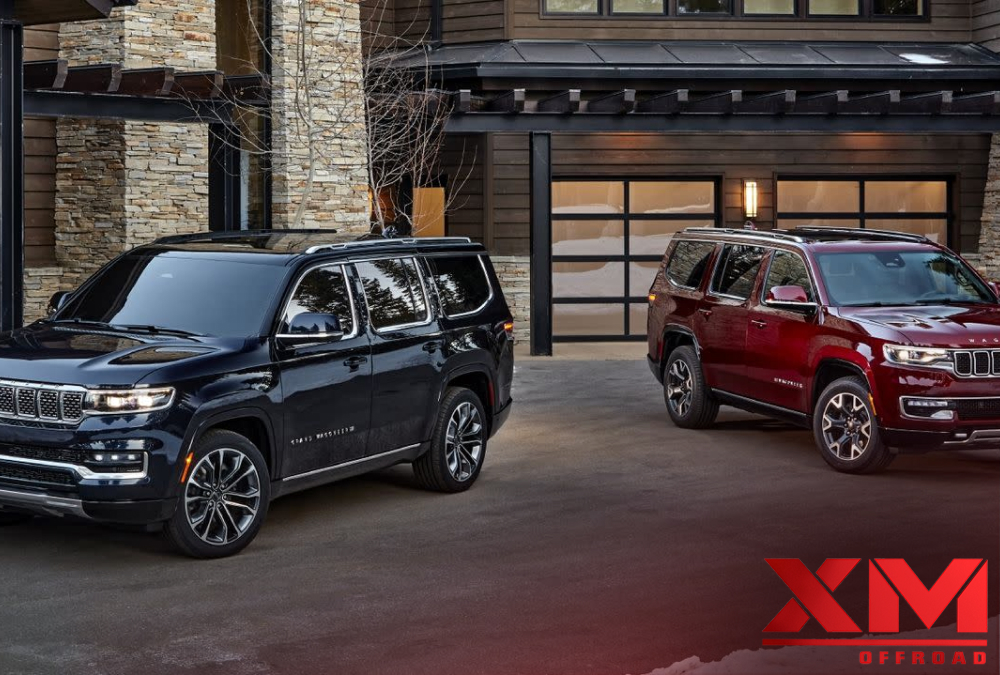The automotive landscape is continually evolving, yet some nameplates endure through the decades, becoming symbols of luxury, power, and rugged capability. One such nameplate is the Wagoneer, a name that carries with it a legacy intertwined with adventure and prestige. In recent years, the resurgence of the Wagoneer, alongside its more opulent counterpart, the Grand Wagoneer, has sparked a fascinating debate among automotive enthusiasts and potential buyers alike. This article aims to dissect the specifications and features of the Wagoneer and Grand Wagoneer. What are the distinctive features that set these two models apart? Why do they continue to capture the hearts of so many? Let’s delve deeper into this compelling comparison.
At first glance, the aesthetic differences between the Wagoneer and the Grand Wagoneer may not be immediately apparent. Both vehicles exude an aura of sophistication with their bold silhouettes and refined detailing. However, a closer examination reveals that the Grand Wagoneer is designed to channel a more luxurious vibe. It incorporates higher-end materials and finishes, catering to those who seek not just transport but an experience.
The Wagoneer, while luxurious in its own right, is marketed as the more utilitarian option. It strikes a balance between modern comfort and the rugged capabilities Jeep is known for. The expressive front grille and LED headlamps are signatures for both models, yet the Grand Wagoneer embellishes these features with chrome accents and intricate design choices that elevate its visual presence.
Moving on to performance, both models share a platform that promises formidable capability. The Wagoneer is equipped with a robust 5.7-liter HEMI V8 engine that produces an impressive 392 horsepower and 404 lb-ft of torque. It’s engineered for serious towing, making it an excellent choice for adventurous families and outdoor enthusiasts. When you consider its capabilities, it becomes evident why buyers are drawn to the Wagoneer for practical applications.
In contrast, the Grand Wagoneer takes performance to the next level. Under its hood, one can find a more powerful 6.4-liter V8 engine, which cranks out a staggering 471 horsepower and 455 lb-ft of torque. This powerhouse not only enhances the vehicle’s acceleration and towing capacity but also contributes to a feeling of confidence on the highway and off-road. The Grand Wagoneer is particularly appealing to those who desire a blend of power and plush luxury, effortlessly transitioning between rugged terrain and upscale cityscapes.
Technology is another area where the distinction becomes stark between the two models. The Wagoneer comes equipped with an array of tech features, including an intuitive Uconnect 5 infotainment system, which boasts a standard 8.4-inch touchscreen. Connectivity options abound, offering seamless integration with smartphones via Apple CarPlay and Android Auto. This setup satisfies the tech-savvy driver while not overwhelming them.
On the flip side, the Grand Wagoneer takes technology a notch higher. It features a colossal 12-inch touchscreen that dominates the center console, complemented by an additional 10.25-inch display for the front passenger. The Grand Wagoneer embraces technology to amplify the luxury experience, boasting a premium audio system, advanced driver assistance features, and even a rear-seat entertainment system, setting a new benchmark for family road trips.
Let’s discuss interiors. When it comes to passenger comfort, both models deliver. However, the Grand Wagoneer emerges with an undeniable advantage. Premium leather, real wood accents, and meticulous stitching define its cabin, creating an atmosphere that feels inviting and sophisticated. The spaciousness is palatial, allowing ample room for all passengers, making long journeys feel like a voyage in first-class luxury.
The Wagoneer offers a well-appointed cabin, emphasizing durability and family functionality. The materials may not reach the same extravagant heights as those found in the Grand Wagoneer, yet they are practical for daily use. Removable floor mats, easy-clean surfaces, and configurable seating arrangements highlight its focus on making family outings and adventures convenient and enjoyable.
Moreover, both vehicles address safety with a comprehensive suite of features. The Wagoneer emphasizes essentials, providing adaptive cruise control and automatic emergency braking. Meanwhile, the Grand Wagoneer goes further, offering a more extensive suite of safety tools, including 360-degree camera systems and advanced collision detection technology. This reinforces the idea that luxury often translates to peace of mind, allowing drivers and passengers alike to embark on journeys with confidence.
In summary, the Wagoneer and Grand Wagoneer embody two different philosophies within a shared legacy. The Wagoneer appeals to those who value practicality without sacrificing comfort, making it an ideal choice for families looking to explore the great outdoors. Conversely, the Grand Wagoneer attracts discerning buyers who seek not just performance but also indulgent luxury wrapped in cutting-edge technology.
The fascination surrounding these vehicles lies not only in their specifications but also in their ability to evoke a sense of adventure and prestige. As the automotive world moves forward, the robust heritage of the Wagoneer continues to resonate, reminding us of the balance between rugged capability and refined elegance. Ultimately, whether one opts for the Wagoneer or the Grand Wagoneer, both models promise a rewarding experience, steeped in a legacy that is as compelling as it is awe-inspiring. No matter your choice, each journey taken in these vehicles represents a tribute to exploration, family, and the enduring allure of the open road.
